Home
After Stockholm, Sweden (GeoProc2003), Nanjing, China (GeoProc2006), Lille, France (GeoProc2008), Perth, Western Australia (GeoProc2011), Utah, United States (GeoProc2015), and Paris, France (GeoProc2017), the 7th GeoProc will take place in the city of Utrecht in the Netherlands, on 3-5 July 2019.
The event will maintain traditional approaches to, as well as introducing new breakthroughs in, the study of Coupled Thermo-Hydro-Mechanical-Chemical (THMC) processes in Geosystems – see Flyer GeoProc2019. With destructive natural earthquakes having increasing impact as global population grows, and with seismicity caused by georesources extraction and geological storage activities becoming increasingly widespread, GeoProc2019 will focus on the key role of Coupled Thermo-Hydro-Mechanical-Chemical (THMC) processes on earthquake and faulting phenomena. Specifically the meeting will address the role multiscale THMC processes in controlling natural and induced seismicity.
Sponsored by:

Synopsis and Topics
Natural and induced motion on faults, in particular the initiation and propagation of earthquake rupture, involves a wide range of complexly coupled THMC processes involving frictional deformation, heat production, pore fluid pressurization, phase changes, chemical reactions, creep and fluid flow at scales. Recent developments are rapidly advancing our understanding of faulting phenomenon, from brittle versus ductile faulting, to seismic versus aseismic frictional slip, rupture nucleation, coseismic slip, slow slip and tectonic versus induced earthquake rupture behavior. Ongoing progress depends on integrating different research fields and disciplines, including laboratory and numerical experiments with input from field geology, seismology. rock engineering, material sciences and advanced microscopy techniques. The complexity of the coupled THMC processes involved and the vast range of length and time scales that have to be considered is unprecedented. The topics to be addressed by GeoProc 2019 will include:
- Slow to fast frictional experiments, theory and numerical modelling
- Geophysical observations and interpretation in terms of coupled THMC processes
- Empirical and (micro)physically based models of THMC processes in faulting
- Role of THMC processes in controlling natural destructive earthquakes
- Role of THMC processes in induced seismicity, fault reactivation and landslides
Invitations
This conference will attract experimental, theoretical and modeling scientists, as well as engineers and practitioners in the field of seismic hazard assessment, to come together from different backgrounds to address common scientific issues in fault and earthquake mechanics relevant to tectonically active faults and to fault motion induced by human activities, such a geo-energy production and geological storage of energy and CO2. Researchers working on any of the above topics are invited to submit abstracts addressing their most recent advances. Invited keynote lecturers will include
- Dr. David Dempsey (University of Auckland, New Zealand)
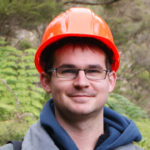 Induced Earthquakes: Parameterized and Put to Use
Induced Earthquakes: Parameterized and Put to Use
- Dr. Jan van Elk (NAM, The Netherlands)
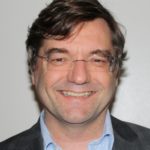 The Data Acquisition and Study program into Induced Seismicity in the Groningen Gas Field, N.E. Netherlands
The Data Acquisition and Study program into Induced Seismicity in the Groningen Gas Field, N.E. Netherlands
- Dr. Futoshi Yamashita (NIED, Japan)
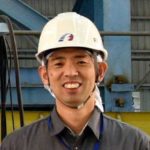 Two types of foreshock activities observed on a meter-scale laboratory fault: Slow-slip-driven and cascade-up
Two types of foreshock activities observed on a meter-scale laboratory fault: Slow-slip-driven and cascade-up
- Prof. Yves Guglielmi (Lawrence Berkeley National Laboratory, USA).
 Probing at the source of induced seismicity: Understanding the couplings between permeability creation, stress dynamic variations and aseismic/seismic slip based on mesoscale experiments
Probing at the source of induced seismicity: Understanding the couplings between permeability creation, stress dynamic variations and aseismic/seismic slip based on mesoscale experiments
- Prof. Nadia Lapusta (Caltech, USA)
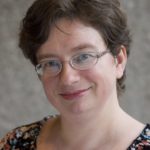
Dynamic rupture of creeping fault segments due to thermal pressurization of pore fluids: insights from numerical modeling
- Dr. Elena Spagnuolo (INGV, Italy)

Chemical and hydro-mechanical coupling in fault zones: an experimental overview
- Prof. Klaus Regenauer-Lieb (University of New South Wales, Australia)
 THMC instabilities and the Multiphysics of Earthquakes
THMC instabilities and the Multiphysics of Earthquakes
- Dr. Tom M. Mitchell (University College London, UK)
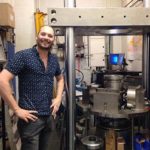 The interplay of fault zone structure and fluid flow in controlling crustal seismicity
The interplay of fault zone structure and fluid flow in controlling crustal seismicity
- Prof. François Renard (University of Oslo, Norway)
 Dynamics of microfracture precursors during the nucleation of faulting in rocks
Dynamics of microfracture precursors during the nucleation of faulting in rocks
Chairs and organizers
Chair: Prof. Chris Spiers (High Pressure and Temperature Laboratory, Utrecht University)
Co-chair: Prof. Jean Sulem (Laboratoire Navier, Ecole des Ponts Paris Tech, France)
Co-chair: Prof. Klaus Regenauer-Lieb (University of Western Australia)
The local organizing team consists of the following members of Prof. Spiers’ group at the High Pressure and Temperature Laboratory at Utrecht University:

